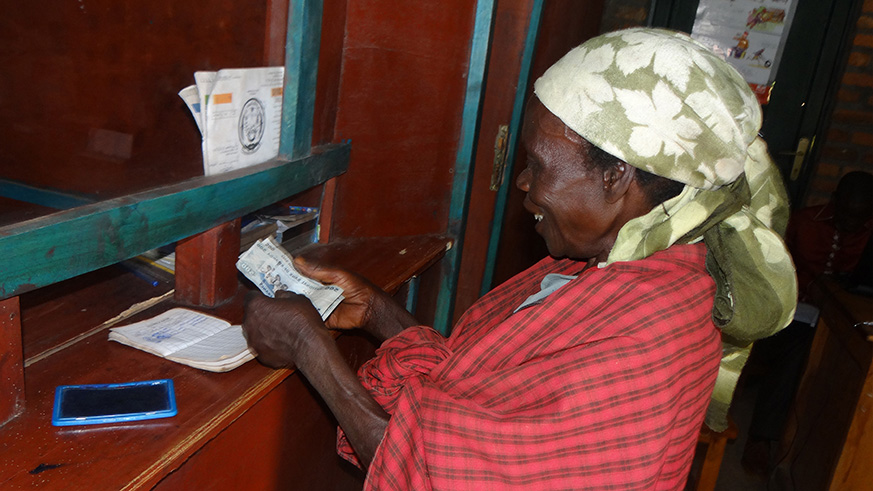

NEW YORK – In modern economics, the interaction between supply and demand with regard to goods and services is well understood, thanks to the pioneering work of the late Kenneth Arrow and Gérard Debreu. But the links between the domain of goods and services and that of money and finance are so mathematically complex that, despite repeated attempts, our understanding of them remains rudimentary. As a result, most policy decisions in the domain of money and finance are based on observed regularities in the data.
That is why the World Bank’s triennial Global Findex report is so important. Based on a survey of more than 150,000 representative individuals, the report provides a birds-eye view of patterns and regularities in data pertaining to finance and financial inclusion – such as saving behavior, use of mobile money, and preferred modes of sending and receiving remittances – in 140 economies. The insights gleaned from these data provide vitally important help in shaping effective policy.
The latest Global Findex report informs us that 515 million individuals opened a "bank account” at a traditional financial institution or through a mobile money provider between 2014 and 2017. As a result, 69% of adults worldwide now have bank accounts, up from 62% in 2014 and 51% in 2011. This rise in financial inclusion is welcome news, not least because, in the event of a downward income shock, a household’s consumption will fall much less if it is linked to the formal financial sector.
The latest Global Findex report also underscores the benefits, especially for women, conferred by access to mobile money. According to a study – cited in the World Bank report – by MIT’s Tavneet Suri and Georgetown University’s William Jack, mobile accounts have enabled 185,000 Kenyan women to leave farming and start more remunerative small businesses and retail activities.
More broadly, access to mobile money supported a 20% increase in the savings of women-headed households in Kenya. And, as the Global Findex report, using data from India, shows, leakage of funds for pension payments declines sharply when the payment is made with smart cards instead of cash.
But, beyond providing evidence to support effective policymaking, the Global Findex report has another crucial benefit: it spurs healthy competition among countries in areas that ultimately improve citizens’ wellbeing. After all, it is an unavoidable human trait that credible and prominently displayed charts and rankings can stir up aspirational spirits.
Mainstream neoclassical economics largely ignores this fact, instead suggesting that our "utility function,” or that which we aspire to maximise, is exogenous. But if that were true, there would not be so much jockeying over credit ratings, the World Bank’s Doing Business rankings, or even Olympic medals.
The competition prompted by the Global Findex rankings could be particularly valuable, especially with regard to financial inclusion. According to the latest report, the world’s most financially inclusive economies are the Nordic countries, as well as Canada and the Netherlands, all of which have a score of 100% (meaning virtually everybody has an account). At the other end of the spectrum are the Central African Republic, where just 14% of residents are financially included, and Afghanistan, where 15% are.
Between these two poles lie Pakistan (21%), Tanzania (47%), Indonesia (49%), Bangladesh (50%), China (80%), and Kenya (82%). The United States has a score of 93% – decent overall, but rather poor for a rich country. Indeed, it trails behind Singapore (98%), the United Kingdom (96%), and Hong Kong (95%). This should provide incentive for stronger efforts to raise the US score.
The Global Findex report also quantifies and ranks countries according to the gender gap in financial inclusion. Here, Jordan does the worst, followed by Turkey. Interestingly, there are six countries where more women than men have bank accounts: Argentina, Georgia, Indonesia, Laos, Mongolia, and the Philippines.
Of course, current rankings are not the only valuable insights the Global Findex report provides; the data are much more nuanced than that. For starters, it shows change over time. India, for example, has made huge strides in expanding financial inclusion. In 2011, only 35% of adults had bank accounts. By 2014, that figure had risen to 53%. Today, it stands at 80%.
Yet it should also be noted that 48% of accounts in India are "inactive” – that is, they have not been used at all in the previous 12 months. That is the highest share of inactive accounts in the world, and exactly double the developing-country average of 24%.
Simply put, the Global Findex report gives policymakers both the information and motivation they need to take action that genuinely improves citizens’ wellbeing. In lieu of a solid theory explaining the relationship between goods and services, on the one hand, and money and finance, on the other, this could not be more beneficial.
The writer, former Chief Economist of the World Bank, is Professor of Economics at Cornell University and Nonresident Senior Fellow at the Brookings Institution.
Copyright: Project Syndicate


